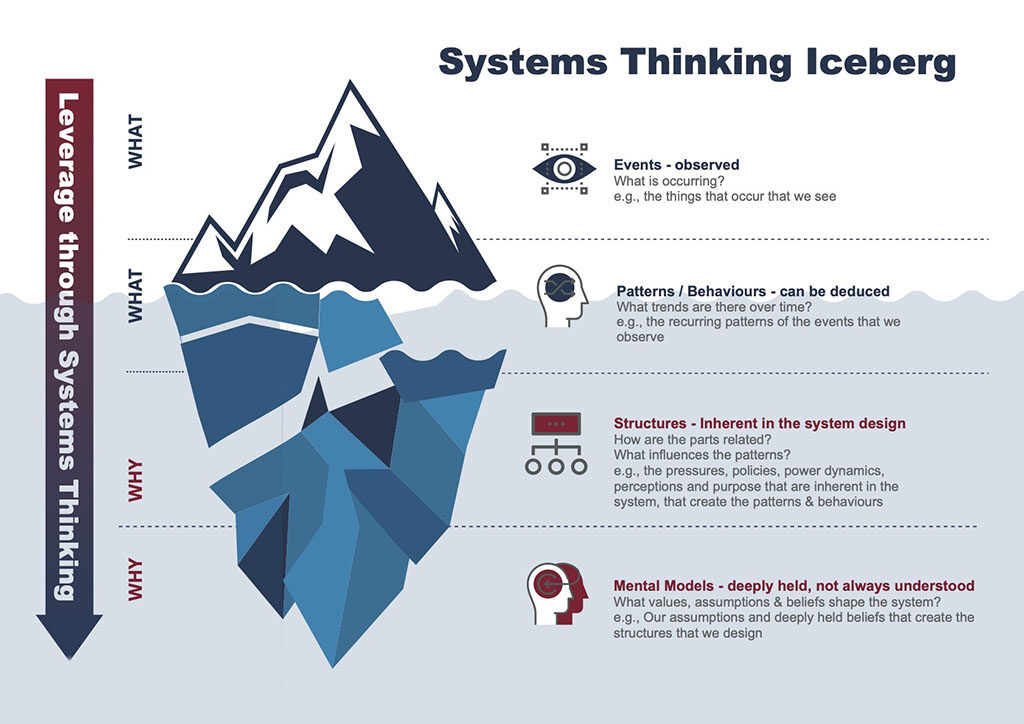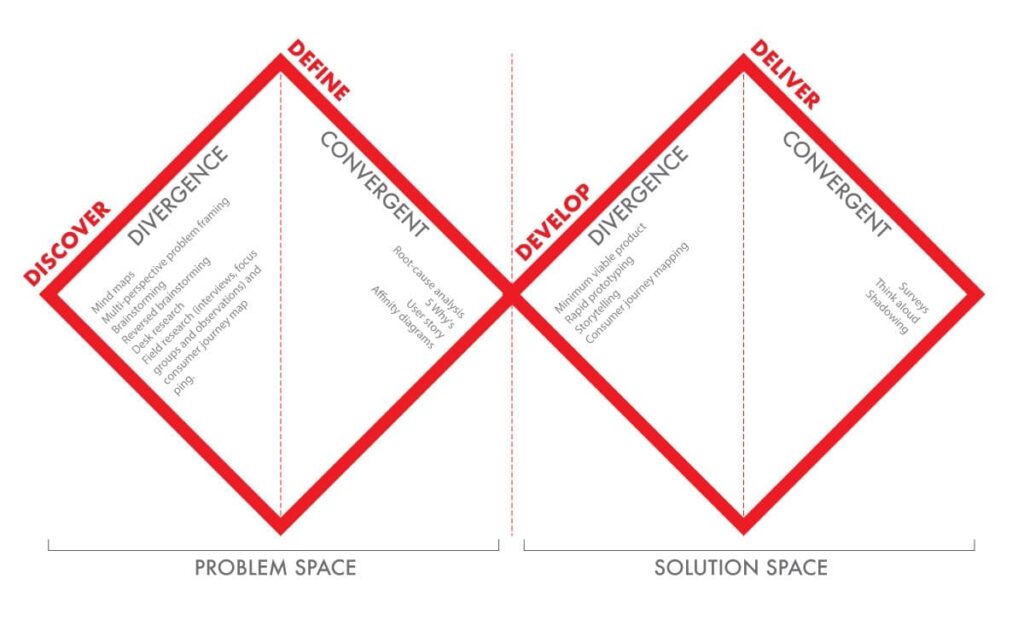Service Design in Government 2022 – My highlights
It was great to be able to attend the 2022 SDinGov conference recently. I’ve picked out a few of my highlights from the sessions I attended over the three days and reflected on how they help me understand the work I do.
About the Service Design in Government conference
The conference brings together a range of people from different backgrounds including central and local government, healthcare and education. It’s a three day event where people who manage, design and deliver services can share their knowledge and practices through a programme of talks, discussions and workshops.
There was good variety in the sessions that offered opportunities to curate your own pathway between practice and policy. As an HCD practitioner early on in his career I chose to focus on more of the practical sessions.
View the 2022 SDinGov programme
I thought it would be useful to share my key takeaways from the conference for anyone thinking of attending in the future. My standout sessions were:
- Systems thinking in service design: a new community of practice?
- Life before discovery – how we stop projects failing at the first hurdle
- Mind the gaps – how to get more from discovery and alpha
- Inclusive design: luxury or must have?
Systems thinking in service design: a new community of practice?
Systems thinking in service design session synopsis
I’ve had a growing interest in systems thinking and how it can be used to frame some of the problems we encounter when designing new services. India Roche and Zoe Posser ran a session about how we might do that. They talked about the growing complexity of the systems in which we deliver new services and how there is often invisible parts of it that we need to understand.

The Sytems Thinking Iceberg, Image source: Quintessential
The systems thinking iceberg is a useful way to help direct us in understanding where complexity lies. I would have liked to have explored this concept in more detail. I have certainly become aware in my own work how the components of a system and their relationships with each other influence how it behaves.
In my previous role, I worked on a project that delivered a new service for students. I was responsible for researching the student experience. When the service was launched it was clear that not enough time had gone into exploring the others parts of the iceberg which led to avoidable problems during the first release.
It was great to be able to spend time talking within breakout groups about how we have used or could use a systems thinking toolkit to solve the design problems that we encounter. A number of people mentioned a free 8-week course which teaches how to use such a toolkit.
Systems Practice course from Acumen Academy
Learn more about using systems thinking in service design – a blog post on Medium by Mike Laurie
Life before discovery – how we stop projects failing at the first hurdle
Life before discovery session synopsis
Tim Daley and Cory Hughes gave a talk on the importance of exploring the pre-discovery space of a project. I thought it worked nicely with some of the ideas from the systems thinking session. In my team we follow the UK Design Council’s Double Diamond process.

The Double Diamond process, Image source: Designorate
As a user researcher I am often starting my work within the discovery phase before a project begins. I seek to understand the needs of users which I can turn into insights for the stakeholders of a project to help guide us when we start designing a new service. There is, however, a space that needs to be explored before the discovery phase that must consider a range of critical factors which include:
Policy – How might the current policy of your organisation influence or restrict the service you want to design?
Culture – What is the culture and mind-set of your organisation and how might that influence how people use your new service?
Resource – Do you have the right resource and skillset within your team to deliver the new service?
These are not new ideas for someone who has worked within the University for the last 7 years. It did, however, make me think that we could benefit from adding a third diamond to the image above that takes in exploration of the space before the discovery phase. While we may not always be able to influence things within this space, particularly at a policy level, we can allow ourselves a better chance of delivering effective, successful services if we can understand the impact senior level thinking and decision making can have.
Learn more: “The Double Diamond Design Thinking Process and How to Use it” on Designorate.com
Mind the gaps – how to get more from discovery and alpha
Mind the gaps session synopsis
Amanda Payne and Mark Skinner talked about the space between the discovery and alpha phases of a project. They help deliver services within the government space and work with the GDS methodology where the alpha phase translates to activity in the second diamond of our approach.
They suggested that it is useful to prioritise an additional step between the two phases. This step is intended to be a short burst (2-4 weeks) of research to sense check what has been learned in the discovery phase and involves the following:
- Identify any gaps in your discovery phase research
- Identify the key users in your next phase
- Work with a small representative group of these users
- Rapidly test a lightweight prototype to sense check your thinking
I think this is a really important idea in the lifecycle of a project. I’m currently researching the student experience of applying to university and accepting an offer. It’s a wide ranging experience that requires zooming in and out of certain aspects because not every part of it can be researched in detail. It means that there will always be gaps in our understanding of this experience. I think the space that they highlight going into a new project is a really useful one to reflect on those gaps in our understanding and take time to sense check what we are about to do.
Inclusive design: luxury or must have?
Inclusive design session synopsis
I was really impressed with one of the keynote talks given by Shabira Papain. She emphasised the need for inclusive design as a factor in building a better culture into which we deliver our services. As a user researcher I feel like I am reporting what is happening on the ground but often don’t get a chance to understand in the same amount of detail what is happening at the top. It’s critical that we align the ground level thinking with that at the senior level.
We can achieve this by designing inclusively with the users of our service as well as with those who represent the business needs of the organisation. Only by doing this will we be able to start changing the culture of our organisations.
Shabira also emphasised the need for regular sense checking in our work and noted that this process helps us build more confidence that we’re delivering the right service. It allows us to identify any outliers within our organisations and communities so that we ensure we are designing services that include rather than exclude.
It made me reflect on a user interview I conducted recently where the student had a visual impairment and had talked about the challenges of navigating parts of our web estate. We can discover needs like this and more by ensuring we not only design inclusively but recruit inclusively too when we research. If we continue to approach designing new services like this then we reduce the risk of reinforcing exclusion by design.
Conclusion
I really enjoyed my time at the 2022 SDinGov conference. As someone who attended the online 2021 conference it was so nice to meet people in person. Some of the talks I had with attendees and those giving the talks were really interesting and everyone was really open and friendly. It led to both useful insights into how other people tackled similar challenges that I face and contacts to continue these conversations in the future.
I think that the main takeaway for me was the importance of thinking systemically as I approach any work that I do. I don’t work in a vacuum and there are ways in which I can frame my approach to things that can help me influence and shape the system in which I work. One thing that I need to do more is share what I am learning out into the wider community.
I would recommend the SDinGov conference to anyone interested in or practising HCD, especially those in the early stages of their career. It’s a great way to see that you’re not alone in your challenges.
Follow #SDinGOV on Twitter for more write ups and resources from the conference




1 replies to “Service Design in Government 2022 – My highlights”